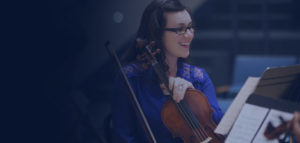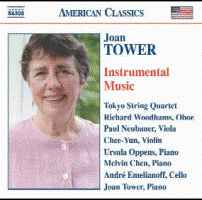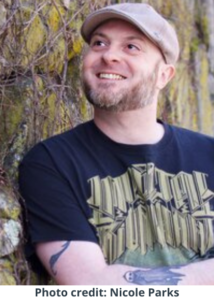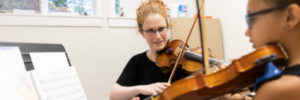
CCM’s new website designed just for you!
We are excited, thrilled, and happy to introduce you to our new look!
Created with you in mind, you’ll easily find your new class or workshop, learn of upcoming concerts and lectures, and easily access information about private lessons or group class registration.
Get to know our faculty— their bios provide their teaching philosophies, education, and what they like to do in their spare time. Find out who does Tai Chi, who is an avid baseball fan and pitched for three seasons in a high-level amateur league, and who enjoys spearfishing!
We’ve made it easier to discover CCM News & Events, and we’re ready to answer all your Frequently Asked Questions.

CCM at the West Concord PorchFest
CCM musicians and the community gathered for a free, grassroots town music festival on Saturday, September 25th. Music lovers walked around West Concord to experience live music and around 20 different musical groups! 
In addition to the CCM Adult Clarinet Ensemble playing folk, rag, tango, pop, and classical music, CCM faculty member Max Anderson’s Acoustic Trio and his bluegrass band, Pretty Saro, performed to an excited crowd.
CCM bringing music to everyone this fall—there’s the Weekly Bluegrass Jam for American Roots enthusiasts and the first event of the 2021-2022 CCM Concert & Lecture Series: 21st Century Classical Composers for those passionate about classical and chamber music.
Are you a CCM friend yet?
Join us on Instagram and Facebook to be the first to learn CCM news and more! See what music videos we like, photos we post, practice tips and articles we suggest, and new music in the music world. Be sure to bookmark the CCM Blog so you never miss a new post.

Their shadows are long. Ask an acquaintance not steeped in musicology to name a composer, and chances are they’ll pick from a handful of go-to names: Beethoven, Bach, Brahms — maybe Bernstein.
Even orchestral musicians default to the familiar. And there’s a good reason for that. “They’re used to playing masterpieces,” Joan Tower, a contemporary composer, pianist, and conductor, told interviewer Bruce Duffie. “Most of the orchestral music programs are strong, solid, well orchestrated, well written pieces.”
Any newer piece, on the other hand, “probably is not as well orchestrated, not as strong in shape and focus.”
In other words: It takes a long time for a fresh composition to mature into a classic.
Questioning the Status Quo
Becoming a composer today takes a certain boldness, with the gravitas that title entails. Yet an inspiring number of  musicians, from a diversity of backgrounds, are willing to take up the challenge. Doing so requires finding the fine line between respect for the acknowledged masters and pushback against long-established boundaries and limitations.
musicians, from a diversity of backgrounds, are willing to take up the challenge. Doing so requires finding the fine line between respect for the acknowledged masters and pushback against long-established boundaries and limitations.
The title of Tower’s 1986 piece “Fanfare for the Uncommon Woman” captures that attitude with note-perfect precision. It acknowledges Aaron Copeland’s brilliance as a composer while calling out the gender bias implicit in the name of his most famous work.
Evan Williams, an African-American composer who says he “didn’t even know Mozart and Beethoven existed” during his childhood, took an even more explicit jab at the status quo. He wrote a harpsichord concerto called “Dead White Man Music,” commissioned by the Urban Playground Chamber Orchestra.
A serious purpose lay beneath the surface snark. “Lots of people see that concerto as an aggressive statement,” Williams told interviewer Anya Shukla, “yet it’s actually a question: What kind of music should I write as a Black composer?”
Exploring a Whole World of Experience
The “Why?” of being a composer is just as important as the “How?” — a lesson that took Angélica Negrón time to learn. “I was constantly trying to prove myself, because in the world of classical music, women and Latinas are not well-represented,” Negrón, a native of Puerto Rico, told Vice.
But while Negrón showed she “was capable of using fancy techniques” as a musician, the performances left her empty. Finding her voice required composing her own pieces. “As I continued to evolve and get comfortable as a composer, I also had to find the courage to write the music I wanted to write,” she said.
For Negrón, composing involves a visual element. Her opera “Chimera” was inspired by drag queens. “I use whichever sounds I think make a better picture,” she said. That includes everyday objects like vegetables in addition to obscure instruments.
Negrón refuses to be pigeonholed; her website notes that she “writes music for accordions, robotic instruments, toys, and electronics as well as for chamber ensembles, orchestras, choir, and film.”
Chinese composer Du Yun also has stretched the definition of composer to fit her vision. “I think of myself more as a journalist or a documentary filmmaker,” she told VAN Magazine. “If a Pulitzer can be given to a photojournalist documenting war and conflict, why can’t a piece of music also deal with these topics?”
Yun has answered that question emphatically — her opera “Angel’s Bone,” which tackles human trafficking, won the Pulitzer Prize in Music in 2017.
Like Negrón, Yun uses an expanded palette of sounds. Her influences include Mongolian long tunes and Buddhist grotto caves, along with Quentin Tarantino and Tom Waits.
Boldly Going Where No Man (or Woman) Has Gone Before
Becoming a composer is not easy. But there is more opportunity than ever before for those with determination, vision, and musical chops to make their voices heard. And there’s still room for white males, like Aaron Jay Myers.
and musical chops to make their voices heard. And there’s still room for white males, like Aaron Jay Myers.
Myers fits the basic demographic profile of a classic composer — but not the background. Growing up in Baltimore as a child of divorced parents, Myers gained his entrée into music as a thrash guitarist. “Punk and hardcore was my salvation,” says Myers, whose early bands included Mad Max and Social Vomit.
Myers’ interests evolved to include flamenco and free jazz. And eventually this blend of disparate influences led to this former punk rocker composing a piece that probably would have struck a chord with audiences in the 19th century: a duet for violins performed by his wife, Nicole Parks. Even the title, “For The World Is Hollow and I Have Touched the Sky,” has an old-school lyricism — although Myers actually lifted it from an episode of the original Star Trek TV series.
In their willingness to blend new sounds, new influences, new approaches, and new media, 21st century composers are trying every avenue to create modern masterpieces. Or, as Evan Williams puts it in his Twitter bio, “Come for the sassy memes, stay for the music.”
Interested in learning more about the composers of today? Concord Conservatory of Music presents 21st Century Classical Composers on October 21 at 7:00 p.m. Tickets are just $15, and students 18 and under are admitted free.
CCM private-lessons students might also consider our Music Achievement Program (MAP), which is designed to increase students’ musical fluency — and set them on the path to becoming 21st century composers themselves.

At CCM, we often talk about taking a holistic approach to teaching music, one that emphasizes musicianship. Musicianship is the difference between learning how to technically play an instrument versus becoming a musician.
We encourage students to see themselves as musicians from the moment they begin studying music. For students of all ages, understanding and taking ownership of their music sets them up to succeed as they find joy in the experience of becoming a musician.
This process involves several aspects of musical training and appreciation.
Internalizing the rhythm
How many times have you heard someone say, “I have no rhythm,” or “I can’t find the beat”? People often believe that the ability to follow a beat is something you are born with, when in fact, rhythm is learned.
In our early childhood classes, you might see students practicing walking to the rhythm, using their bodies to find the beat. As the rhythm speeds up or slows down, they speed up or slow down with it. For an older adolescent, finding the beat might involve clapping along until with a rhythm until they are comfortable with it — and then continuing to clap out the rhythm when the music stops. With adults, we might ask students to thump their chests on the downbeat to internalize the rhythm.
beat. As the rhythm speeds up or slows down, they speed up or slow down with it. For an older adolescent, finding the beat might involve clapping along until with a rhythm until they are comfortable with it — and then continuing to clap out the rhythm when the music stops. With adults, we might ask students to thump their chests on the downbeat to internalize the rhythm.
Feeling the music in your body and your head helps you better recognize how music should sound when you play it.
Training the ear (which means training the brain)
You’ve likely heard of “ear training” or audiation. The phrase “ear training” is somewhat of a misnomer: you are actually training your brain to hear and identify notes.
People described as having perfect pitch can hear a note and immediately identify it. This, again, is a learned skill, and it is why we emphasize singing as a skill for every musician and not just vocalists. Developing vocal skills returns every student to the foundational elements of music.
it is why we emphasize singing as a skill for every musician and not just vocalists. Developing vocal skills returns every student to the foundational elements of music.
We see brain training with students learning to play a stringed instrument that does not have frets, like a violin and a cello. Those musicians learn where to put their fingers on the fingerboard and develop muscle memory of how a note sounds in tune.
Developing creativity
There are different ways to think about creativity and to build it into learning from the earliest lessons.
Nurturing creativity can be as simple as asking a student who is learning a scale to play four bars in a C major scale rather than just instructing them to play the C major scale. By coming up with the notes themselves, the student is getting a taste of improvisation.
A more involved way to work on creativity can be generating rhythm patterns, such as through a call and response exercise where an instructor has students repeat then build on each other’s rhythms.
As a musician becomes more accomplished, creativity takes on the ultimate form with the joy of true improvisation and composition.
Why musicianship matters
We hear all the time from adults who express their regret at having “given up” on music lessons when they were younger. Some say they just weren’t born musicians. Others remember boredom or a challenging instructor.
In reality, students who lose interest in music, grow bored or resentful, or believe they lack talent are the consequence of teaching without musicianship. Those students have not been engaged in the world of music; they feel they are “pressing buttons” or “reading dots on a page.” They aren’t taught to draw connections between their lessons and the music they listen to for fun. Without the benefit from ear and brain training, they don’t develop the skills necessary to play in an ensemble. It’s no wonder music lessons become a burden for these students.
It is our responsibility, as guides and instructors, to help our students develop musicianship and to become musicians. At CCM, we bring an awareness of that responsibility to everything we do, from our earliest interactions.
Witnessing musicianship
If you attend our recitals and study the musicians performing, you might notice students who are not just playing the notes on the page, but who are incorporating the dynamics of the music, the soft and the loud, and engaging their bodies as they move with the music. You are witnessing musicianship in action.
Our emphasis not just on playing but also on understanding the structure of music deepens the experience and builds skills and confidence beyond expectations.
When students have opportunities to internalize music, develop ear and brain training, experiment with creativity, and make music their own, they develop a lifelong interest in what they are studying — and ownership of what they are creating.